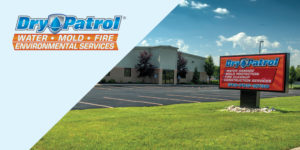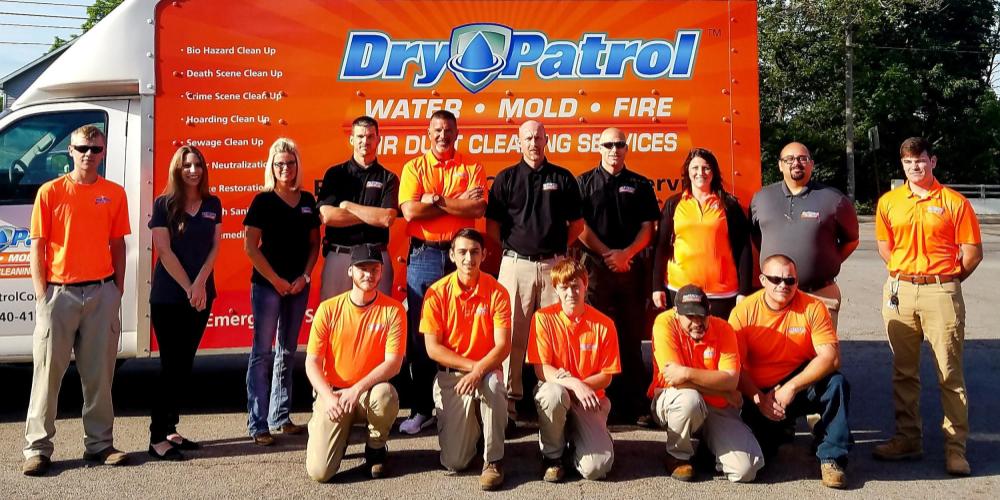
Dry Patrol of Central Ohio, a company that provides water damage restoration and other emergency restoration services, prides themselves on putting customer relationships first.
“When people are going through trying times — especially some of the water losses with all of your personal belongings in your basement or with your mom’s stuff and she’s passed away — those situations really deserve to be dealt with professionally and compassionately,” said Bryan Daughtry, the Owner of Dry Patrol.
It can be difficult for restoration companies to strike a balance between having empathy for customers while also taking the necessary steps to ensure they get paid for the vital services they provide. However, it is possible to deal with these situations with compassion while also ensuring payment collection.
At Dry Patrol, Bryan and his team have found that the key to maintaining good customer relationships while also staying on top of accounts receivable is to have open conversations with their customers about lien rights. Restoration customers aren’t familiar with the construction industry and state lien statutes, and they can be confused or stressed about payment situations when dealing with a tragedy or unexpected flood. To combat this confusion, it’s beneficial to set expectations and communicate.
Dry Patrol has found that these three best practices help them successfully communicate lien rights to their customers, and help them get paid faster in the process.

1. Proactively communicate your payment process to prevent surprises
To avoid causing friction with his customers, Bryan and his team explain how their business protects payments.
“So, a really good example of being transparent is making sure the customer understands that the state of Ohio only gives us 60 days to file a lien [from the last day of furnishing labor on a residential project]. So it’s really not us doing this. We’re just doing all we can do to protect our interests as a small business, and it’s the state of Ohio that only gives us 60 days to deal with it,” Brian said.
By taking the time to speak with customers about lien rights, Bryan has found that they will often advocate for him to the insurance adjusters.
“The more we’ve communicated with the customer, and more importantly, educated them, the more they can be our advocate back to the insurance adjuster and say, ‘these people performed a very professional service in my home and they need to be paid for what they did’,” explained Bryan. “The minute the adjuster hears the customer take that kind of stance is the minute the adjuster is quicker to pay that invoice and make the problem go away.”
By explaining these state requirements to the customer, Bryan is showing that his company knows and is following the correct steps to collect payment, and that his business operates within state guidelines.
“If you do that appropriately, then there’s no gray area. And if there’s no gray area, there are no problems,” Bryan said. “Where there are gray areas, or where you don’t set and manage expectations appropriately, that’s where problems occur. So the more we can proactively communicate with [customers], then hopefully working together we can all avoid having to place a lien on the property.”
2. Set expectations with your customer early
After every completed job, Bryan sends a preliminary notice to customers and insurance adjusters along with the invoice. A preliminary notice is not required in the state of Ohio. However, by consistently sending these notices up front, Bryan sets the expectation that Dry Patrol will follow the correct procedures in the case of nonpayment.
“So every time we send out an invoice (so we’ve finished the job), that’s when we’re entering the customer’s information as a project in Levelset. And then, we automatically send out the preliminary notice so that we can verify all their information is correct,” explained Jeanine, the Dry Patrol Office Assistant.
Also, sending these notices on every job provides a level of valuable transparency that makes it easy for the insurance adjusters to know who was on the job (in their case, Dry Patrol), and when the service was provided so they can quickly process payment.
3. Explain why you’re filing a lien
In situations where Byran needs to escalate a payment issue and file a mechanics lien, his team is open and clear with their customers about the steps they will take to get paid.
“When it comes to the mechanics lien, we make sure that we’re communicating with them the whole time before we actually place the lien. We want to make sure that they know that if I don’t have to place a lien, and if I have proof they are sending payment and that the insurance company is sending payment directly to us, then I won’t place it,” explained Jeanine. “But sometimes we don’t get that proof or we don’t get confirmation that payment is coming, and we have no other choice.”
Fortunately, Bryan rarely needs to file liens because communicating openly with customers about payment nearly always gets him paid on time. In the event that Dry Patrol does have to file a lien, they release it upon receiving payment. Between communication and removal of the lien, Bryan is able to maintain good customer relationships even when a lien is filed on a job.
Communication is key
By communicating clearly with customers using the processes above and by partnering with Levelset — a lien rights management software solution — Bryan has decreased his average payment collection time from 90 days to 17 days. Dry Patrol is successfully getting paid faster all while remaining professional and compassionate with customers in difficult situations.
Restoration companies nationwide are partnering with Levelset to ease the stress of managing lien rights and keeping customers informed. Schedule a call with the Levelset team today to learn how you can do the same.

Start collecting payments faster
Schedule a call with our team to learn how you can get paid faster with Levelset.
